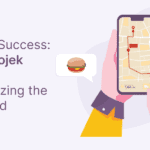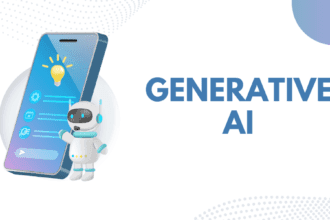
For years, marketers have leaned on the traditional sales funnel—a predictable, step-by-step process where customers move from awareness to purchase, almost like clockwork. But today, that model no longer holds. With digital channels, personalized recommendations, and instant access to information, customer journeys are no longer linear.
But why the sudden—or not so sudden—change? And more importantly, how can businesses adjust their approach to close deals after all? This post aims to answer these questions. But not before defining a customer journey as is.
What Is a Customer Journey?
A customer journey is the path a person takes when interacting with a brand.
Traditionally, this journey was seen as a linear process where a customer moves through 3 distinct stages:
- Awareness – They discover a need and learn about possible solutions.
- Consideration – They compare options and evaluate their choices.
- Decision – They make a purchase.
This setup made marketing feel rather simple. Businesses could easily map out each stage, create the right content, run ads, and guide customers smoothly from one step to the next.
However, this model no longer reflects how people actually buy. Instead of following a fixed sequence, customers now move freely between stages before making a decision.
Why Customer Journeys Are No Longer Linear
On average, customers today use almost 6 touchpoints, with approximately 50% using more than 4. Some customer journeys may even involve hundreds of touchpoints across different channels! But what’s driving the change? There are several factors contributing to it:
- Omnichannel behavior – Customers engage with brands across the board, including through search engines, social media, and in-store.
- Personalized experiences – AI and algorithms serve custom content that may influence decisions at unpredictable points.
- Social proof & reviews – Buying decisions are often shaped by peer recommendations and third-party opinions.
- Self-guided research – With instant access to information, customers explore options at their own pace.
How to Adapt to Non-Linear Customer Journeys
Since customer journeys are no longer linear, businesses need a flexible, customer-centric approach to engagement. Instead of relying on rigid funnels, they must create seamless customer experiences across all touchpoints to make sure prospects can interact with their brand in the way that best suits them.
Below are key strategies to help businesses adapt:
1. Understand and Track Customer Behavior
The first step to adapting is knowing how your customers interact with your brand. Since they no longer follow a set path, tracking their behavior across multiple channels helps you identify patterns and intent signals.
To do this effectively:
- Use website analytics, heatmaps, and session recordings to monitor user navigation.
- Track social media and email engagement to identify drop-offs and high-interest content.
- Monitor customer service interactions to identify common pain points.
2. Build a Strong Omnichannel Presence
Modern customers move fluidly between different platforms before making a decision. Some may discover a brand on social media, research it via Google, visit an online store, and then complete a purchase in person. Given the stated, it’s clear that a disjointed experience across these touchpoints can cause drop-offs.
To make sure that doesn’t happen, ensure consistent messaging and branding across all platforms. You’ll also want to optimize content for different channels and make transitions between platforms seamless (e.g., letting customers add items to a cart on mobile and check out on desktop).
3. Leverage AI and Automation for Personalization
Customers expect brands to anticipate their needs and deliver relevant experiences. AI and automation help businesses do this by analyzing behavior and tailoring content, recommendations, and communication accordingly.
That said, make sure you:
- Use AI-powered chatbots to provide real-time assistance.
- Implement dynamic content that changes based on user behavior (e.g., personalized email sequences).
- Offer product recommendations based on past browsing history or purchases.
4. Map Out Non-Linear Paths
Because no two customer journeys are alike, businesses need a flexible approach to journey mapping that accounts for multiple entry points, exits, and re-engagement opportunities. Instead of a rigid funnel, consider creating a customer journey map that visualizes how users interact with your brand across various touchpoints.
A well-structured journey map helps brands:
- Identify common paths customers take, even if they loop back or skip steps.
- Optimize marketing strategies for different entry points.
- Reduce friction by streamlining key interactions.
Takeaway
To summarize, customer journeys are no longer linear. Rather, they are shaped by multiple touchpoints, self-guided research, and shifting consumer behaviors. As a result, businesses must rethink their approach and adapt to this new reality, which they can do by:
- Tracking customer behavior
- Building seamless omnichannel experiences
- Leveraging AI for personalization
- Mapping out non-linear journeys to optimize engagement at every stage
Of course, no two businesses are the same. Hence, the exact approach depends on your audience, industry, and resources. But one thing is clear—success comes from adapting, testing, and refining your strategy based on how people buy today. Not how they used to.








